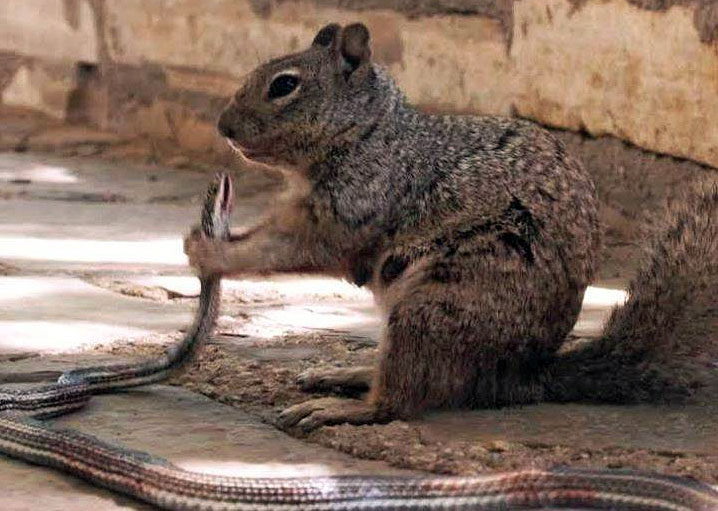What Eats Snakes? An Overview of Snake Predators
what eats snakes __ Snakes are fascinating creatures that have adapted to a wide range of environments worldwide. With over 3,000 species, they occupy various ecological niches, from deserts to rainforests. Despite their often formidable presence, snakes are not exempt from being prey. Many animals have evolved to hunt and eat snakes, ranging from birds to mammals, other reptiles, and even some insects. This article delves into the world of snake predators, examining which creatures hunt snakes and why these relationships are vital for ecological balance.
1. Birds of Prey: Aerial Snake Hunters
Birds of prey, also known as raptors, are among the most common predators of snakes. Eagles, hawks, falcons, and owls have excellent vision, sharp talons, and powerful beaks, making them well-equipped to hunt and kill snakes. Some species, such as the Secretary Bird of Africa, are specialized snake hunters. These birds use their strong legs to deliver powerful kicks to stun or kill their snake prey before consuming them.
- Eagles and Hawks: These large raptors are known for their agility and strength. Species like the Red-tailed Hawk and the Golden Eagle often prey on snakes, particularly those in open habitats like grasslands and deserts. They use their keen eyesight to spot snakes from high altitudes, then swoop down with great speed to seize their prey with sharp talons. The Swainson’s Hawk is known to prey on rattlesnakes and other venomous species, demonstrating their skill and courage as snake hunters.
- Owls: Owls, particularly those that hunt at night, such as the Great Horned Owl, have been known to hunt snakes. Their silent flight allows them to approach quietly, while their powerful talons and beaks enable them to grasp and kill snakes efficiently. They tend to target smaller snake species but can occasionally take down larger ones, depending on their size and strength.
2. Mammalian Snake Predators: Diverse and Adaptable
A variety of mammals are known to hunt and eat snakes, utilizing different strategies based on their size, habitat, and hunting methods. These include small carnivores, larger omnivores, and even some primates.
- Mongooses: The mongoose is one of the most famous snake predators. These small, agile mammals are well-known for their ability to fight and kill venomous snakes, such as cobras. Mongooses have specialized acetylcholine receptors that make them relatively resistant to snake venom. They use their speed, agility, and sharp teeth to outmaneuver snakes, delivering a fatal bite to the snake’s head. In some cultures, mongooses are celebrated as protectors for their snake-hunting skills.
- Honey Badgers: Renowned for their fearless nature, honey badgers are formidable snake hunters. Despite their small size, they are known to hunt and consume some of the deadliest snakes, including puff adders and cobras. Honey badgers have thick skin that protects them from bites, and they also have a high tolerance to snake venom, allowing them to survive bites that would be fatal to many other animals. They are opportunistic feeders and will hunt snakes when available, relying on their tenacity and physical strength.
- Wild Cats: Certain wild cats, such as bobcats, servals, and jaguarundi, are known to hunt snakes. They use their speed, agility, and sharp claws to catch and kill their prey. The smaller cats, like bobcats, often hunt non-venomous snakes, while the larger ones may take on more dangerous prey. Their sharp claws and quick reflexes make them effective at pinning down and immobilizing snakes.
- Primates: Some species of primates, such as chimpanzees and baboons, have been observed hunting and eating snakes. This behavior is not common across all primates but has been documented in certain populations. Primates may use tools, such as sticks, to kill or incapacitate snakes, highlighting their intelligence and adaptability as predators.
3. Reptiles That Hunt Snakes: Cannibalism and More
It might seem surprising, but some reptiles also prey on snakes. This category includes other snake species, large lizards, and even crocodiles in certain circumstances.
- King Snakes and Other Ophiophagous Snakes: The term “ophiophagy” refers to animals that feed on snakes, and some snake species are considered ophiophagous. King snakes, for example, are known for their ability to prey on other snakes, including venomous ones like rattlesnakes. King snakes possess a natural immunity to certain snake venoms and will constrict their prey to death. Their immunity, coupled with their strength and agility, makes them one of the most efficient snake predators.
- Crocodiles and Alligators: While not their primary food source, crocodiles and alligators occasionally prey on snakes. These large reptiles are opportunistic feeders and will eat almost anything that comes within their reach, including snakes. In the swamps and wetlands of the southern United States, for example, alligators have been observed catching and eating water snakes.
- Monitor Lizards: Monitor lizards, such as the Komodo dragon and the Nile monitor, are known to prey on snakes. These large lizards have powerful jaws and sharp teeth, enabling them to catch and consume a variety of prey, including snakes. They are opportunistic hunters, often taking advantage of weakened or vulnerable snakes.
4. Amphibians and Insects: Unlikely Snake Eaters
Although less common, some amphibians and insects have been known to prey on snakes, particularly smaller, younger, or weakened individuals.
- Frogs and Toads: Large species of frogs and toads, such as the African bullfrog, have been known to consume smaller snakes. They typically rely on their rapid tongue movement and powerful jaws to capture and ingest their prey. While not a primary food source, snakes can be part of their diet, especially when other food sources are scarce.
- Centipedes and Large Insects: Certain species of large insects, like giant centipedes, have been documented preying on small snakes. These centipedes use their venomous fangs to subdue their prey, including young or small snakes. Although these occurrences are rare, they highlight the diversity of snake predators in various ecosystems.
5. Human Influence: A Double-Edged Sword
Humans are arguably the most significant predators of snakes, though not always in a direct predatory manner. In many cultures, snakes are hunted for their skins, meat, and even medicinal properties. In some areas, humans kill snakes to protect livestock or out of fear. While this has significantly impacted certain snake populations, it is also worth noting that humans play a role in conserving snake species through habitat protection and education efforts.
- Cultural and Medicinal Uses: In various parts of the world, snakes are hunted for their skins, which are used in fashion, or their meat, which is considered a delicacy in some cultures. Additionally, parts of snakes are used in traditional medicine practices, especially in Asia, where snake gallbladders, venom, and other parts are believed to have medicinal properties.
- Conservation Efforts: While humans have a substantial impact on snake populations through hunting and habitat destruction, they also play a crucial role in conservation efforts. Many organizations and governments work to protect snake habitats, reduce illegal hunting, and educate the public about the importance of snakes in ecosystems. Through these efforts, humans can help maintain the balance of nature and ensure the survival of snake species.
6. Ecological Significance of Snake Predation
Understanding what eats snakes is essential to comprehending their ecological roles and interactions. Snakes often occupy mid-level positions in food chains, acting both as predators and prey. This dual role helps maintain the balance of ecosystems.
- Regulating Snake Populations: Snake predators help control snake populations, preventing them from becoming too numerous. This regulation is essential, as it helps maintain the balance of prey species that snakes typically consume, such as rodents, birds, and insects.
- Promoting Biodiversity: Predation on snakes also promotes biodiversity. By keeping snake populations in check, their predators prevent snakes from over-consuming their prey species, allowing various other organisms to thrive. This balance supports a healthy and diverse ecosystem.
- Inter-Species Relationships: The predator-prey relationship between snakes and their predators fosters complex interspecies relationships, including competition, cooperation, and adaptation. These relationships are critical for the evolution and adaptability of all species involved, driving natural selection and enhancing ecosystem resilience.
7. Conclusion: The Balance of Nature
While snakes are often feared or misunderstood, they play an integral role in ecosystems worldwide. As predators, they control populations of smaller animals, such as rodents and insects, but as prey, they provide sustenance to a diverse range of animals. From the skies above to the ground below, numerous creatures hunt and eat snakes, contributing to the delicate balance of nature. Understanding these interactions helps us appreciate the complexity and interconnectedness of life on Earth, reminding us that every creature, no matter how feared, has its place in the web of life.
By studying these predator-prey relationships, we gain insight into the broader dynamics of ecosystems, which are essential for maintaining biodiversity and ecological health. This balance ensures the survival of species and the natural world as a whole, highlighting the importance of coexistence and conservation.


